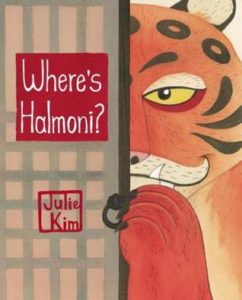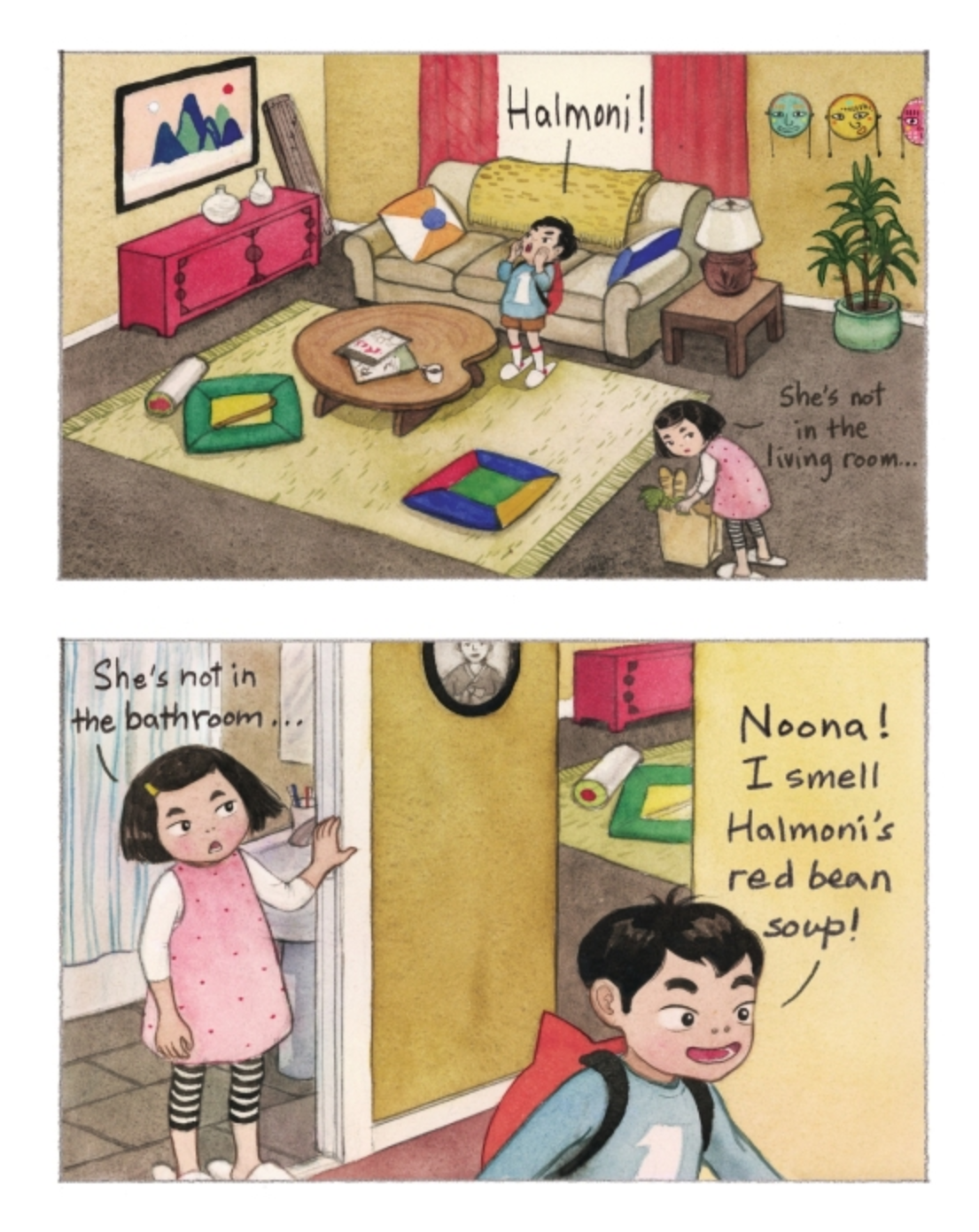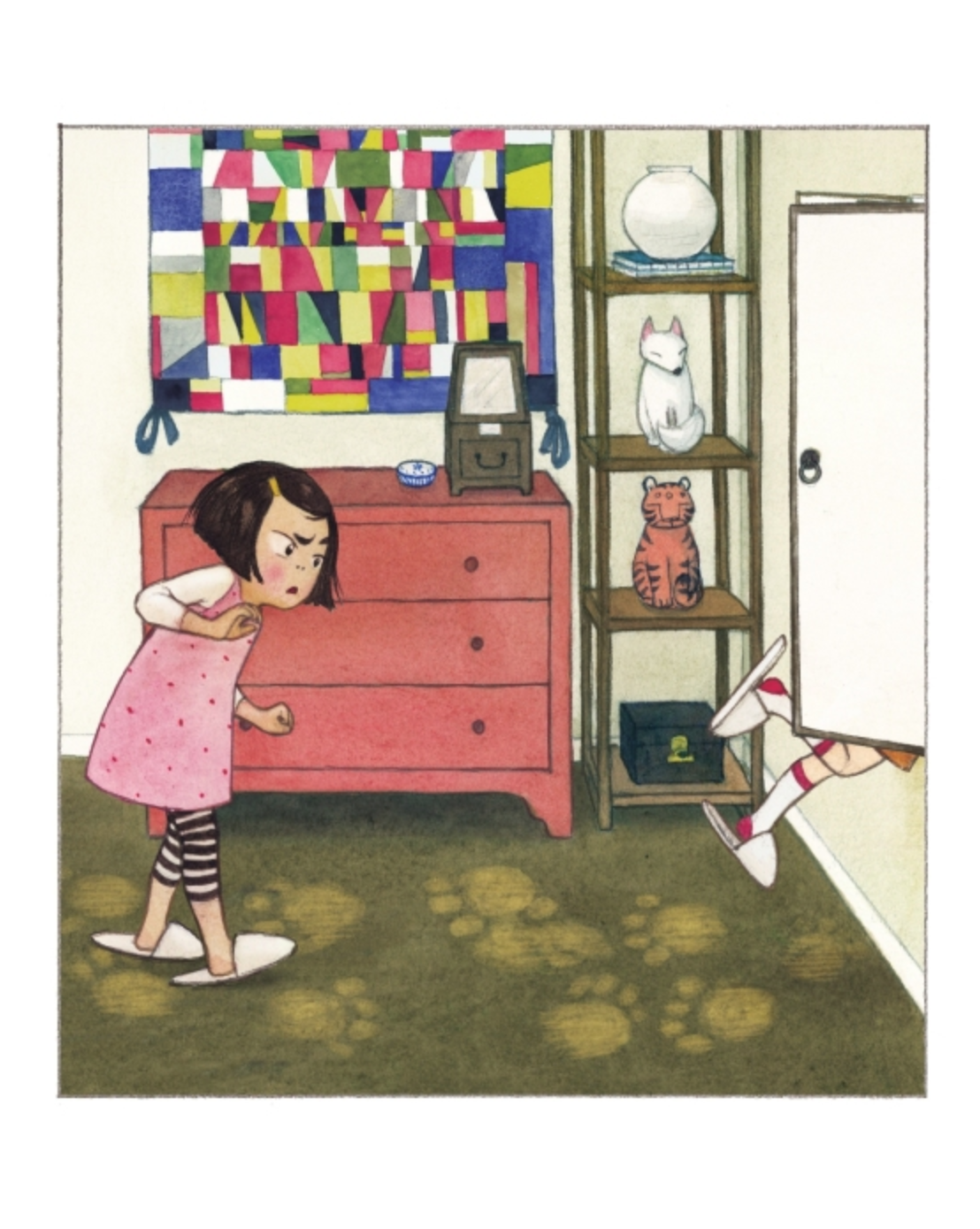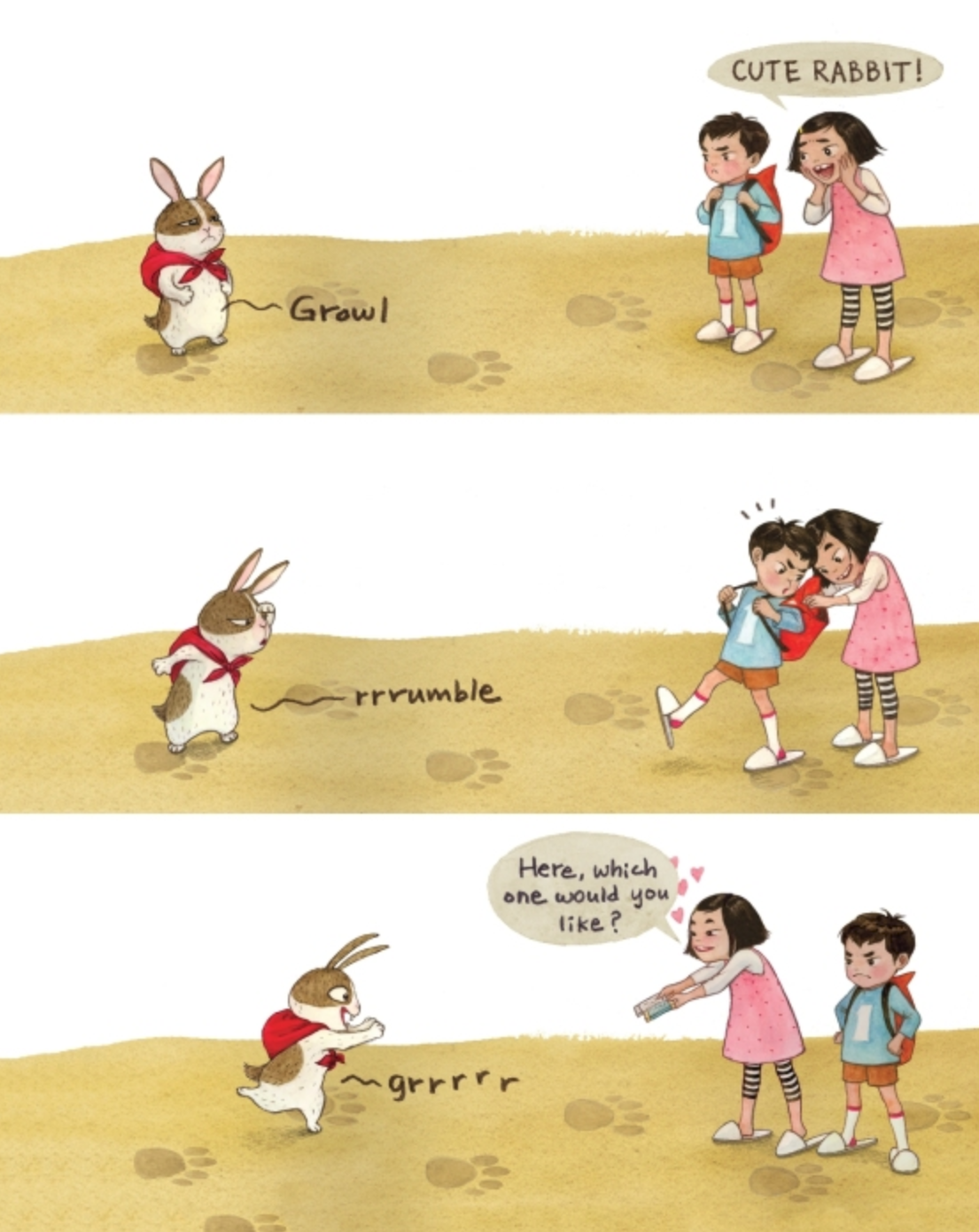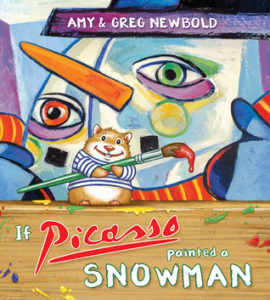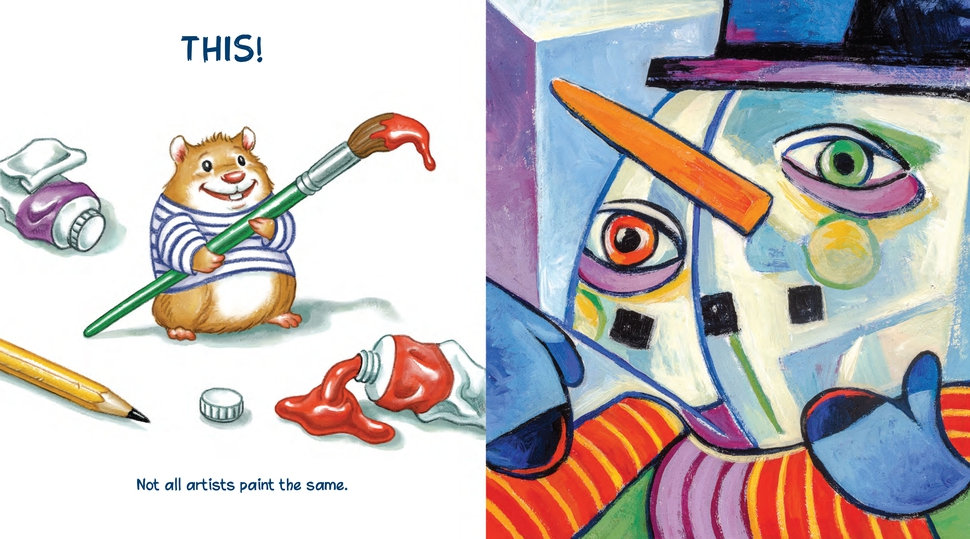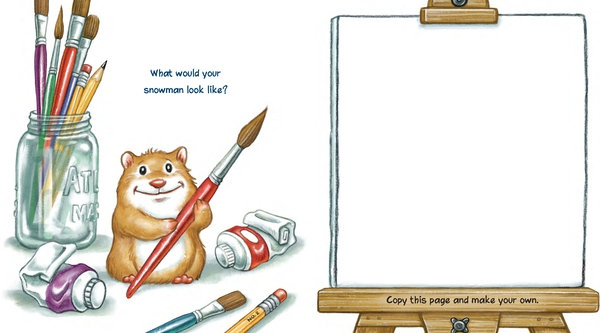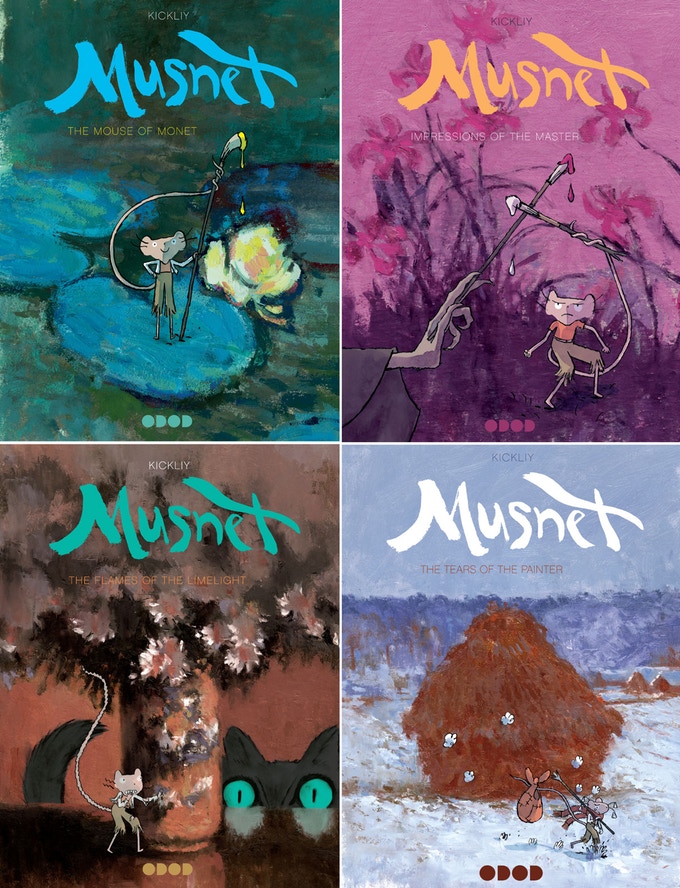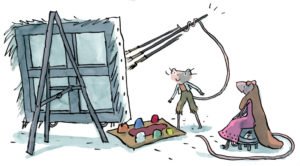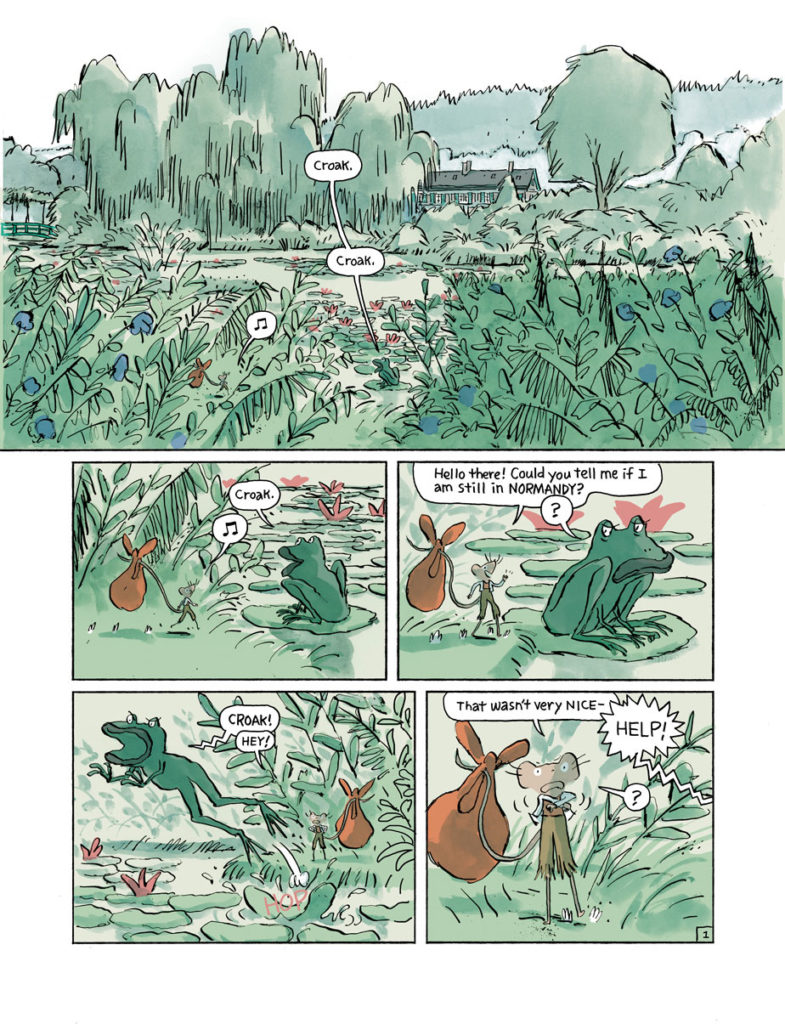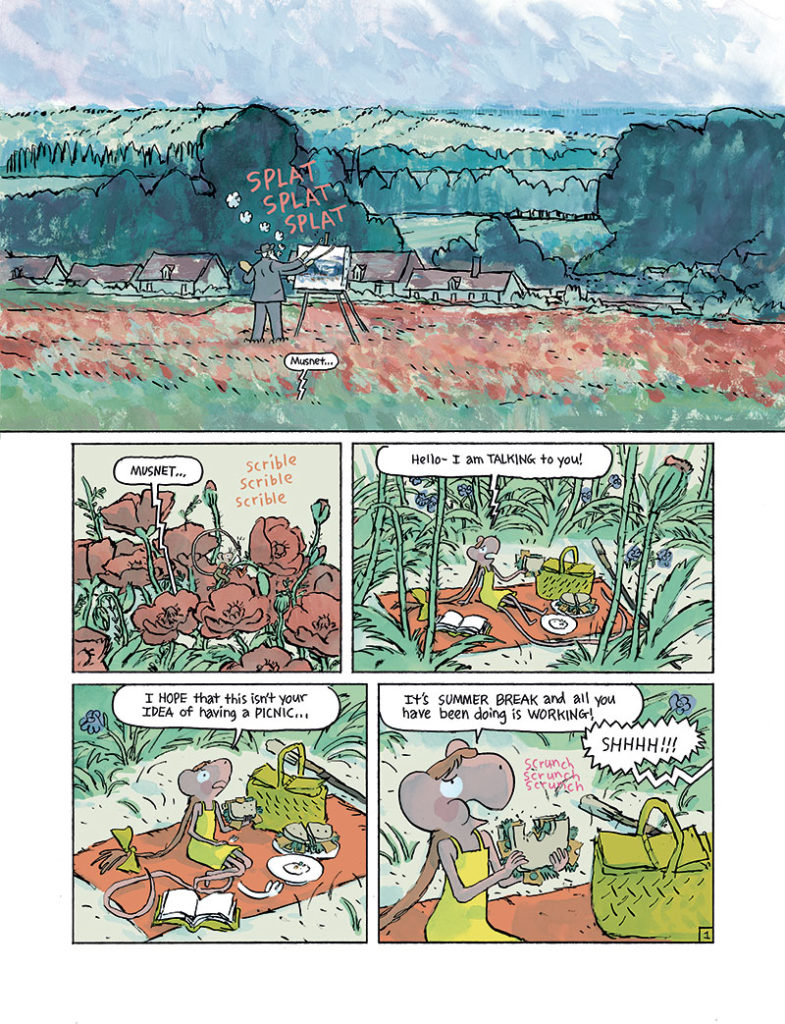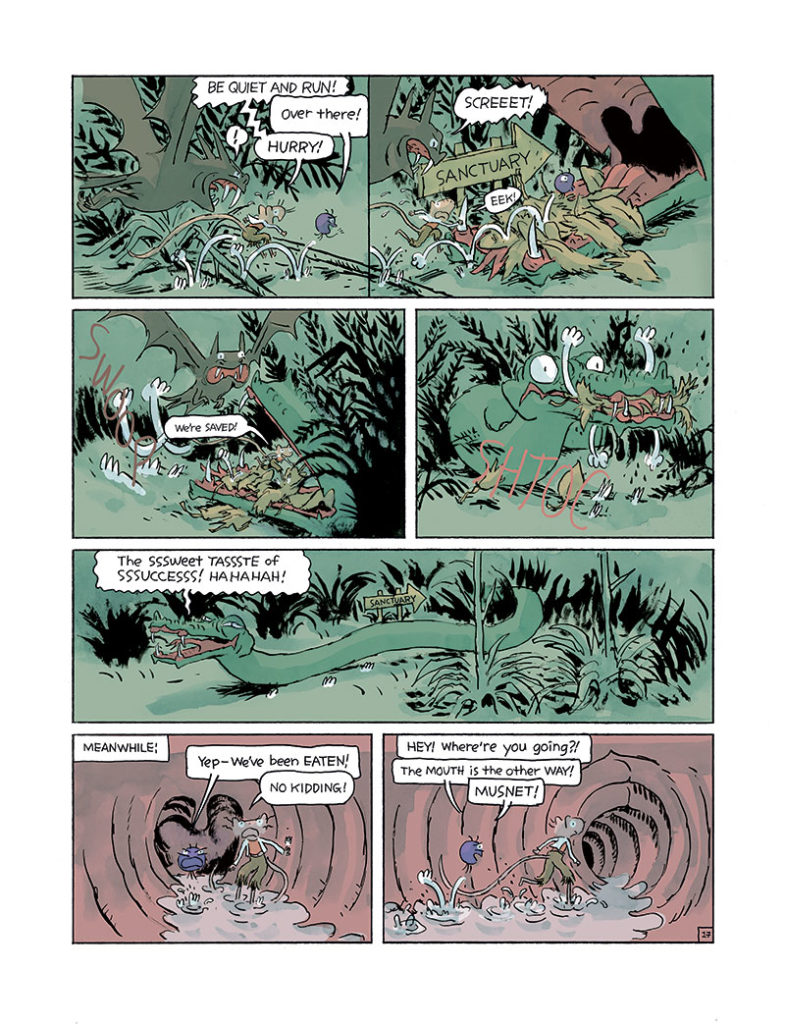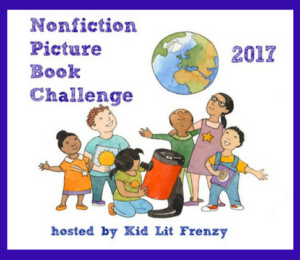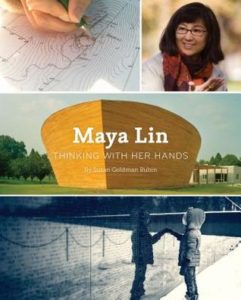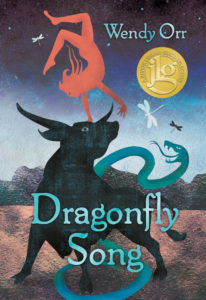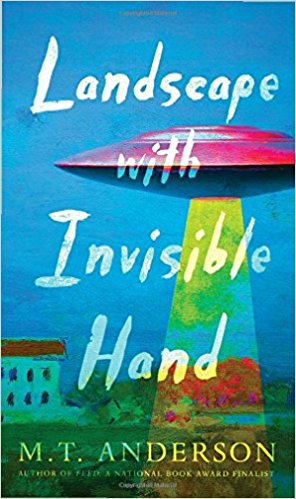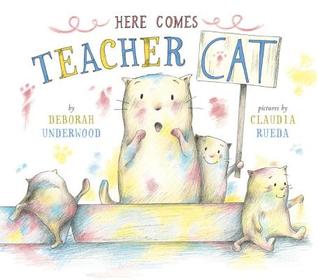Where’s Halmoni?
Author: Julie Kim
Published October 3rd, 2017 by Little Bigfoot
Summary: Where’s Halmoni? is a picture book in a graphic novel style, which follows the story of a young Korean girl and boy whose search for their missing grandmother leads them into a world inspired by Korean folklore, filled with mischievous goblins (dokkebi), a greedy tiger, a clever rabbit, and a wily fox.
Two young children pay a visit to Halmoni (grandmother in Korean), only to discover she’s not home. As they search for her, noticing animal tracks covering the floor, they discover a pair of traditional Korean doors, slightly ajar, new to their grandmother’s home. Their curiosity gets the best of them, and the adventure begins when they crawl through and discover an unfamiliar, fantastical world. As they continue to search for their grandmother and solve the mystery of the tracks, they go deeper into the world of Korean folklore and experience their cultural heritage in unexpected ways, meeting a number of Korean-speaking characters along the way.
Translations to Korean text in the story and more about the folktale-inspired characters are included at the end.
About the Author: Julie Kim is an author and illustrator living in Seattle, WA. She has published with Cricket Magazine, Scholastic, and Mondo. Where’s Halmoni? is her authorial debut.
Praise: “Julie Kim has created a visually stunning world that effortlessly infuses Korean text (Hangul) in rich, expressive art.”—Cybils Awards, winner
“For its jaw-dropping art, encouraging bilingual attitude, and conscientious portrayal of Korean culture, Where’s Halmoni? is a perfect choice.” —School Library Journal, starred
“A sophisticated mélange of urban households, traditional Asian landscapes, vibrant color schemes, cultural details, subtle visual jokes, [and] pitch-perfect dialogue… This book is an excellent choice for either the picture-book or graphic-novel collection.” —Booklist, starred
“Kim’s bright, expressive illustrations are a delight…an accessible, diverse title for a broad readership.” —Kirkus Reviews, starred
“The sibling banter is believable and delightful, [and] Kim’s panel sequences teem with energy.” —Publishers Weekly, starred
Review: This book is a piece of art. The way that Kim combined traditional Korean folklore characters, including giving an explanation about each of them in the back; realistic sibling relationships; an adventure with beautiful settings; and her amazing artwork lent to the creation of a very special book. There is so much to unpack including homage to traditional Asian art styles, inferring opportunities, introduction to Korean folktales, and inclusion of Korean language. This book will be perfect as a read aloud with discussions, lit circles looking at folktales, or as an independent book for your adventure or graphic novel fans.
Teachers’ Tools for Navigation: Where’s Halmoni? and its back matter are a perfect addition to a folklore unit including a discussion on how authors fracture/retell/modernize folktales in all cultures.
And P.S. a whole discussion/lesson could be done around the end pages!
Discussion Questions:
- How did Kim intertwine traditional Korean folktale characters into her story?
- What do the end sheets tell you that the rest of the story did not?
- What clues were there at the beginning of the book that ultimately they would encounter a tiger and a fox?
- How could you infer that Halmoni was their grandmother?
- Before reading the translations of the Korean in the back of the book, use the context clues and try to guess what the characters are saying.
- Would you consider this book a picture book or a graphic novel? Why?
Flagged Passages:
Read This If You Love: Retellings and new takes on folktales
Recommended For:
**Thank you to little bigfoot for providing a copy for review!**
